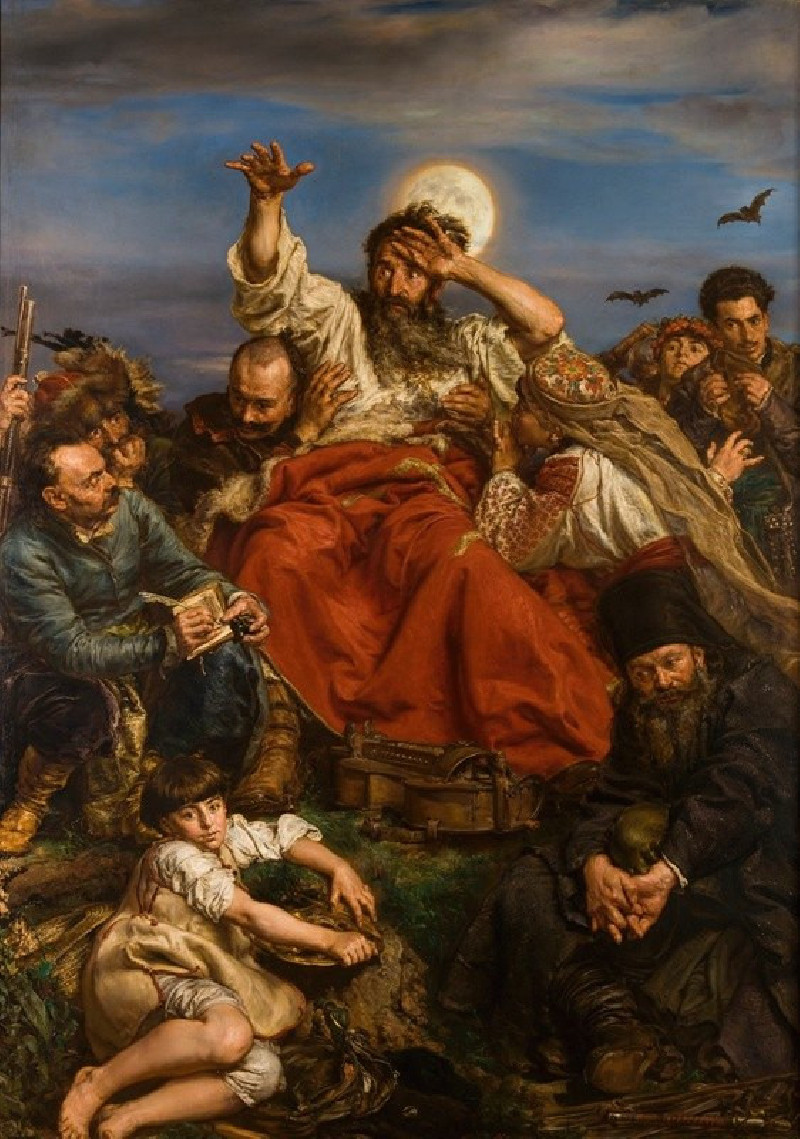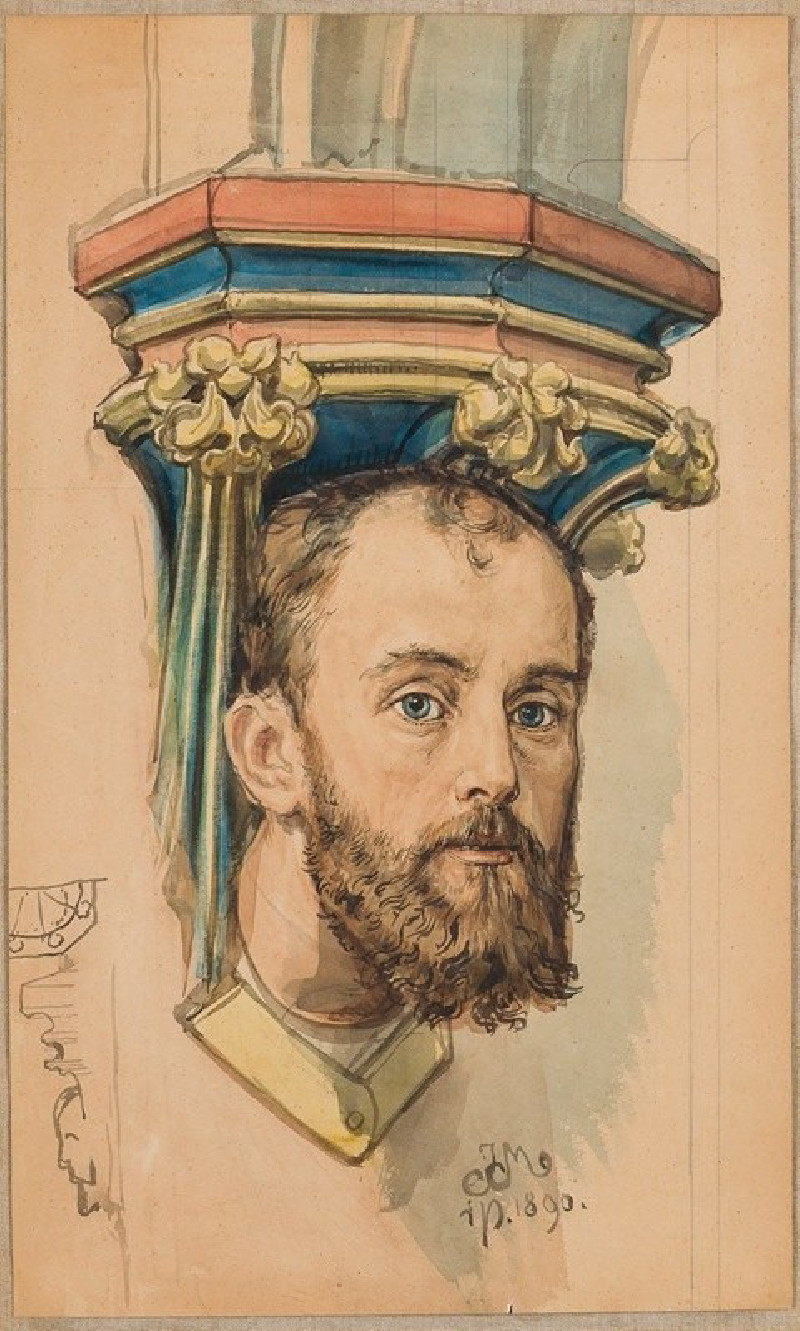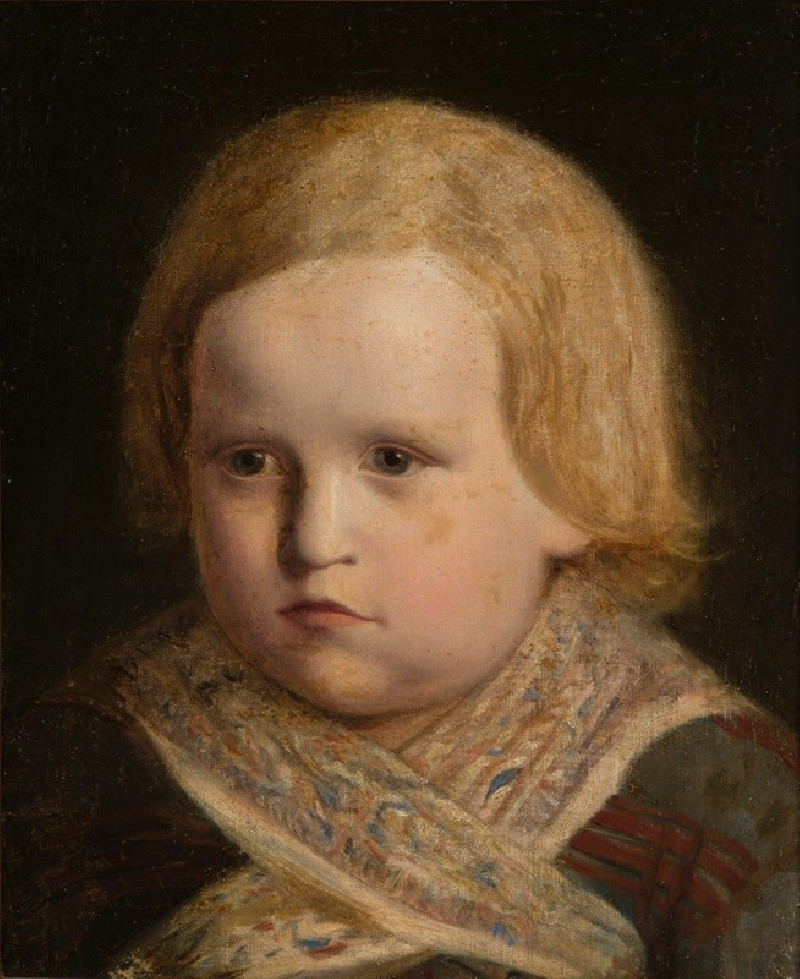Wernyhora (1884)
Technique: Giclée quality print
Recommended by our customers
More about this artwork
Welcome to a glimpse into the world of Jan Matejko's "Wernyhora" (1884), a painting rich with cultural narrative and historical allusion. This masterpiece by the renowned Polish artist captivates viewers with its dynamic composition and vivid storytelling.The painting depicts Wernyhora, a legendary Ukrainian bard and prophet, commanding attention at the center with an intense, visionary gaze and an expressive gesture. He is dressed in a rustic, flowing white shirt and a striking red robe, which contrasts dramatically against the dusky landscape behind him. The moonlit sky and scattered birds enhance the prophetic and eerie mood of the scene.Surrounding Wernyhora are figures representing various factions of Polish society in the 18th century, keenly listening or reacting to his prophetic declarations. On the far left, a focused craftsman sharpens his blade, symbolizing preparation and action. Beside him, a young boy looks out with innocence, perhaps unaware of the weight of the prophecy being declared. To Wernyhora's immediate right, an elderly man seems lost in contemplation, his eyes closed, possibly reflecting internalization of the prophecy's significance. Close by, a richly dressed woman engages intimately with Wernyhora, indicating attention and concern, while various other figures exhibit varying degrees of engagement or anxiety.Matejko's "Wernyhora" not only captures a moment of intense prophetic declaration but also symbolically portrays the stirrings of national consciousness among the Polish people. The painting invites viewers to reflect on the power of prophecy and belief in shaping history and collective destiny.
Delivery
Returns
Jan Alojzy Matejko was a Polish painter, a leading 19th-century exponent of history painting, known for depicting nodal events from Polish history. His works include large scale oil paintings such as Rejtan (1866), the Union of Lublin (1869), the Astronomer Copernicus, or Conversations with God (1873), or the Battle of Grunwald (1878). He was the author of numerous portraits, a gallery of Polish monarchs in book form, and murals in St. Mary's Basilica, Kraków. He is considered by many as the most celebrated Polish painter, and sometimes as the "national painter" of Poland.














































